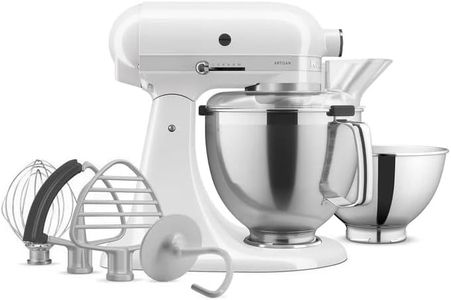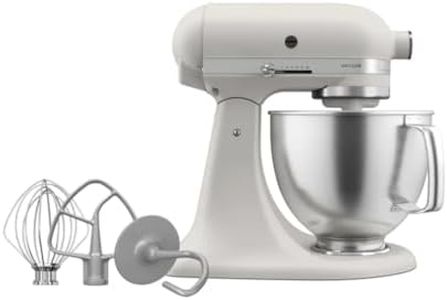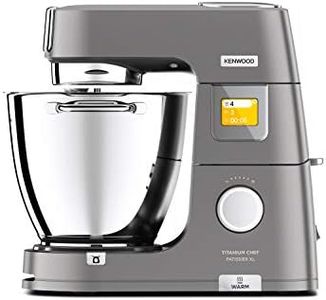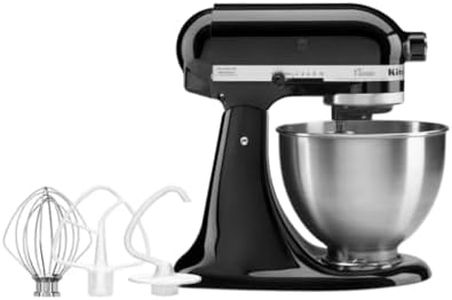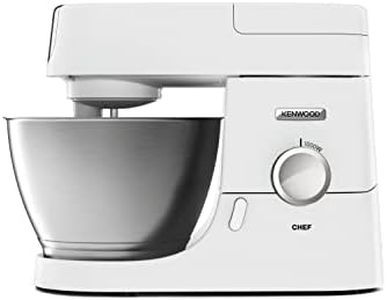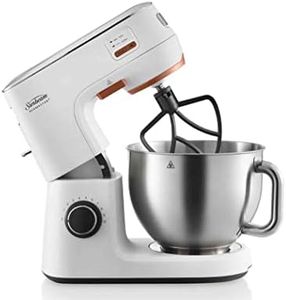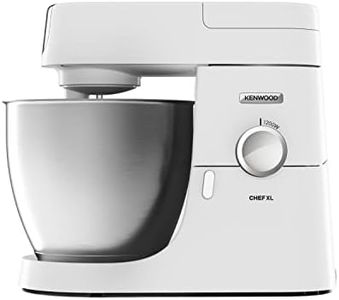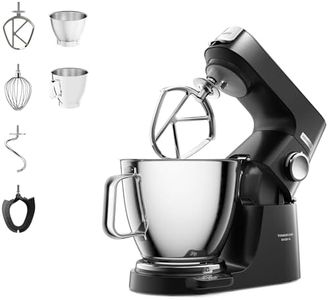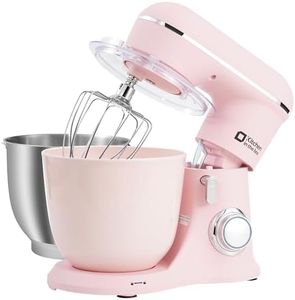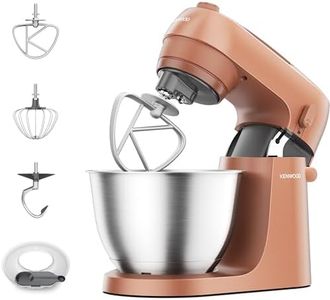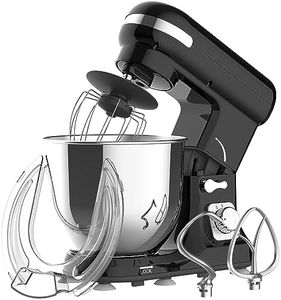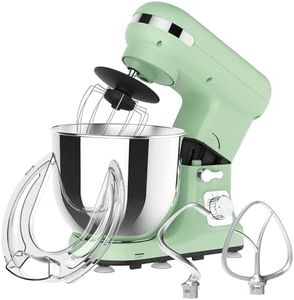We Use CookiesWe use cookies to enhance the security, performance,
functionality and for analytical and promotional activities. By continuing to browse this site you
are agreeing to our privacy policy
10 Best Budget Stand Mixer
From leading brands and best sellers available on the web.Buying Guide for the Best Budget Stand Mixer
Choosing the right stand mixer can make your baking and cooking much easier and more enjoyable. Stand mixers are a handy tool for mixing batter, kneading dough, whipping cream, and more, saving you time and effort compared to mixing by hand. When picking a stand mixer, it is important to look into a few key specifications that will match your typical use, kitchen space, and preferred recipes. Understanding these features will help you select a mixer that fits your needs now and as your skills grow.Power (Wattage)Power in a stand mixer is measured in watts and refers to the motor's strength. A higher wattage allows the mixer to handle tougher jobs like kneading thick bread dough or mixing larger batches. Stand mixers typically range from about 250 watts to 1000+ watts. Lower wattage (250-400W) is good for simple tasks like whipping cream or mixing cake batter. Mid-range (400-700W) can handle most household baking needs, including cookies and pizza dough. High wattage (700W and above) is best for large volumes or frequent mixing of heavy doughs. Think about what you’ll make more often; if you primarily bake basic cakes and cookies, a mixer on the lower end will suffice. For bread and more ambitious baking, pick a higher wattage.
Bowl CapacityBowl capacity determines how much you can make in one go. It’s usually measured in liters or quarts. Smaller bowls (3-4 quarts/liters) are ideal for individuals or couples who bake small batches. Medium bowls (4-5.5 quarts/liters) suit most families or those who bake moderate batch sizes. Larger bowls (6 quarts/liters and up) are useful if you bake in large quantities or want room to avoid spills. Consider your typical recipe sizes and whether you like to make multiple loaves, lots of cookies, or just occasional treats.
Mixing ActionMixing action refers to how the mixer incorporates ingredients. Some mixers have a basic spinning action, while others use planetary mixing, where the beater moves one way while the drive moves another, thoroughly combining ingredients. Planetary mixers generally offer more consistent mixing, reducing the need to scrape the bowl. If you value even mixing and hands-off operation, planetary action is preferable. If you mostly do simple mixing, this feature is less critical.
Speed SettingsSpeed settings control how fast the beater moves. More settings give you better control over different tasks, like gently folding flour or quickly whipping cream. Mixers typically offer 3 to 12 speeds. Fewer speeds are fine for basic mixing or if you don’t mind manually adjusting, while more speeds give greater precision, especially if you like to experiment with different recipes. Think about the range of recipes you want to make and whether fine control matters to you.
Attachment CompatibilityStand mixers often come with attachments or allow you to buy extras, such as dough hooks, whisks, or pasta rollers. Some mixers are compatible with a wider range of accessories, unlocking more functions like meat grinding or food processing. If you want your mixer to be a multi-use tool beyond baking, check what attachments are available for your preferred model. However, if you’ll mainly use it for basic mixing, this may not be as important.
Size and WeightThe physical size and weight of a mixer impact how easily you can store or move it. Heavier mixers tend to be steadier during tough mixing but can be difficult to lift or move off the counter. More compact mixers are easier to store, but might be less stable or have smaller capacities. Think about your kitchen space and whether you'll keep the mixer on the counter or need to tuck it away after use.
Ease of CleaningSome mixers have dishwasher-safe bowls and attachments, while others require hand washing. Mixers with more crevices or complex attachments might take longer to clean. If you want to save time on cleanup, look for models with simple, smooth surfaces and dishwasher-safe parts. If you don’t mind hand-washing, this might be a lesser priority.
